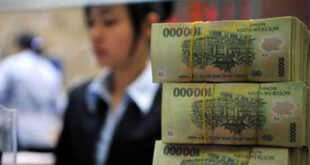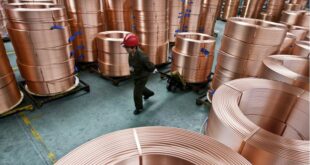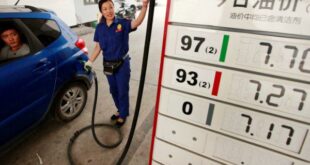Starbucks said Thursday it would open its first store in Vietnam next month, seeking a foothold in the coffee-loving country as part of efforts to expand in Asia.
The communist country’s first Starbucks cafe will be in southern Ho Chi Minh City, the US beverage giant said in a joint statement with its local partner, Hong Kong’s Maxim Group.
“Vietnam is one of the most dynamic and exciting markets in the world,” said Starbucks China and Asia Pacific president John Culver, adding that this would increase the company’s presence across Asia to 12 countries.
Starbucks has been targeting growth outside of the stagnant US market, opening thousands of stores in China and across the Asia-Pacific over the past few years. In October it opened its first stores in India.
Culver said the group was “deeply respectful of Vietnam’s long and distinctive local coffee culture” and hoped its expanding presence in the country would help develop the coffee industry.
Vietnam — the world’s second-largest coffee producer — already has a strong local coffee culture, with dozens of popular local chains and small coffee shops on nearly every street corner.
“We are not worried at all,” Tran Thu Minh, 52, who owns a small street-side coffee shop in the capital Hanoi told AFP after hearing about the looming challenge from Starbucks.
“We have loyal customers who could never drink (Starbucks) coffee. The taste is different,” she said.
Vietnamese coffee is traditionally prepared in individual metal drip filters, which produce a very strong, thick liquid often mixed with condensed milk or served black over ice.
Domestic giants such as Highlands Coffee and Tonkin Coffee already serve Western-style espresso-based coffee drinks, which have proved popular with the younger generation but failed to dent demand for local brews.
“The taste of Starbucks coffee is too light for Vietnamese people, we prefer traditional coffee prepared like this,” said 42-year-old office worker Do Hung as he sipped a cup of Vietnamese coffee at his local cafe.
Starbucks aims to have almost 4,000 stores in the Asia-Pacific by the end of 2013, including 1,000 in China.
It also wants to expand its purchases of Vietnam’s high-quality arabica coffee.
The bulk of the coffee produced in Vietnam — some 90 percent of which is exported — is low-grade robusta coffee, which is used for instant coffee or other blends. However, increasing numbers of farmers are switching to arabica beans, which command higher prices.
AFP
 Asia Finance News Asia finance news, banking, market analysis, business, Forex, trade, Cryptocurrency as it is happening in Asia. Trusted gateway for Asian financial news.
Asia Finance News Asia finance news, banking, market analysis, business, Forex, trade, Cryptocurrency as it is happening in Asia. Trusted gateway for Asian financial news.



